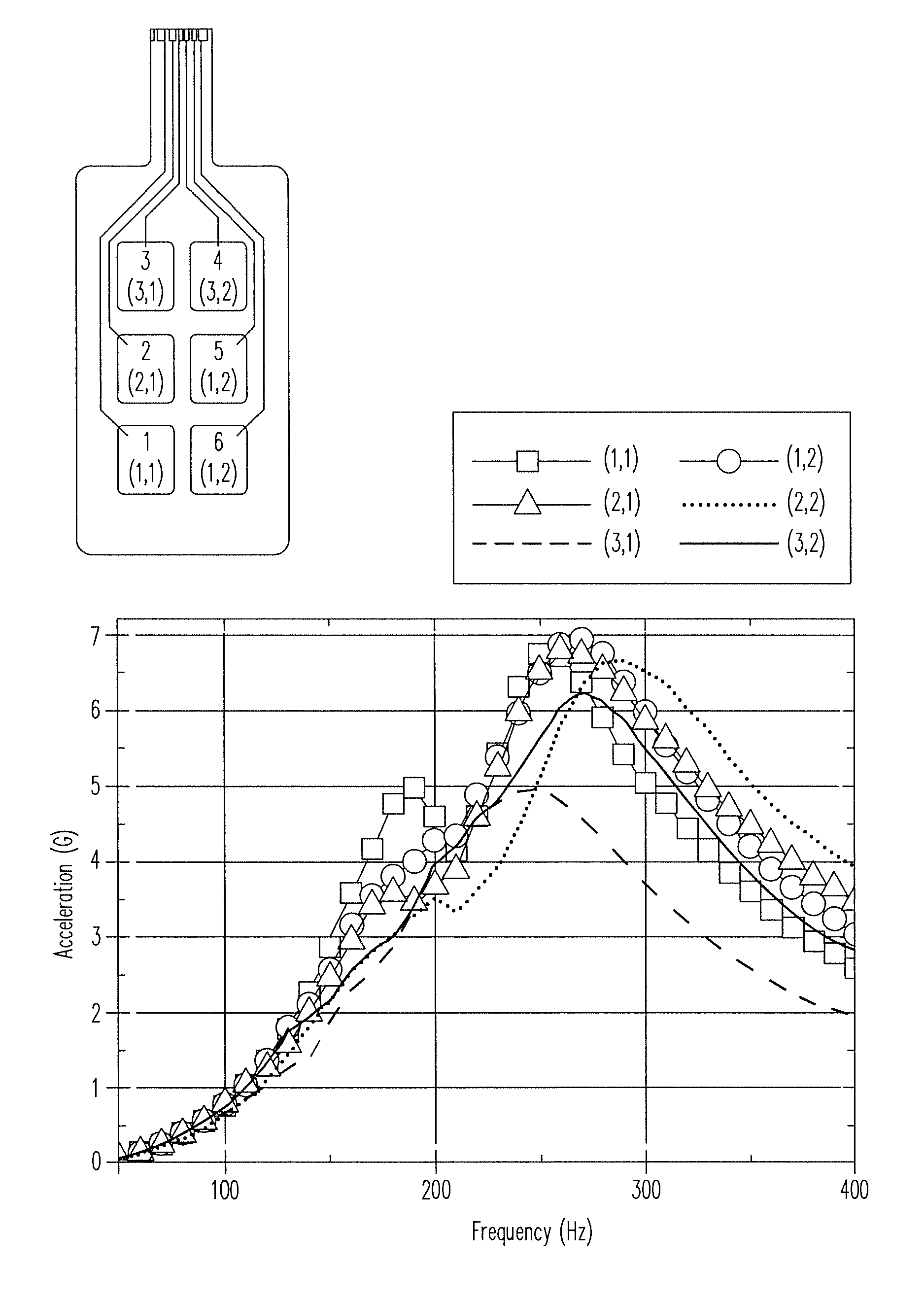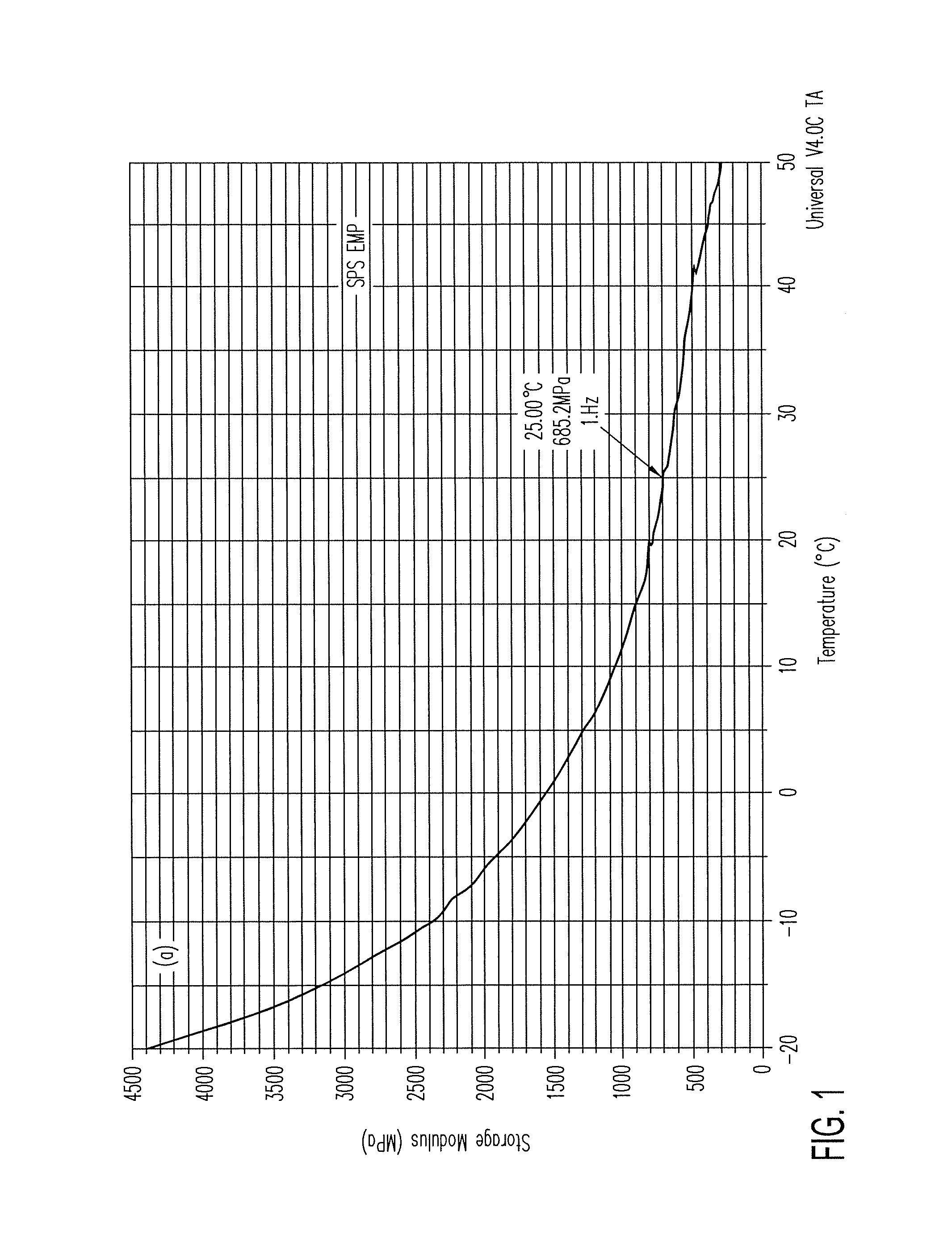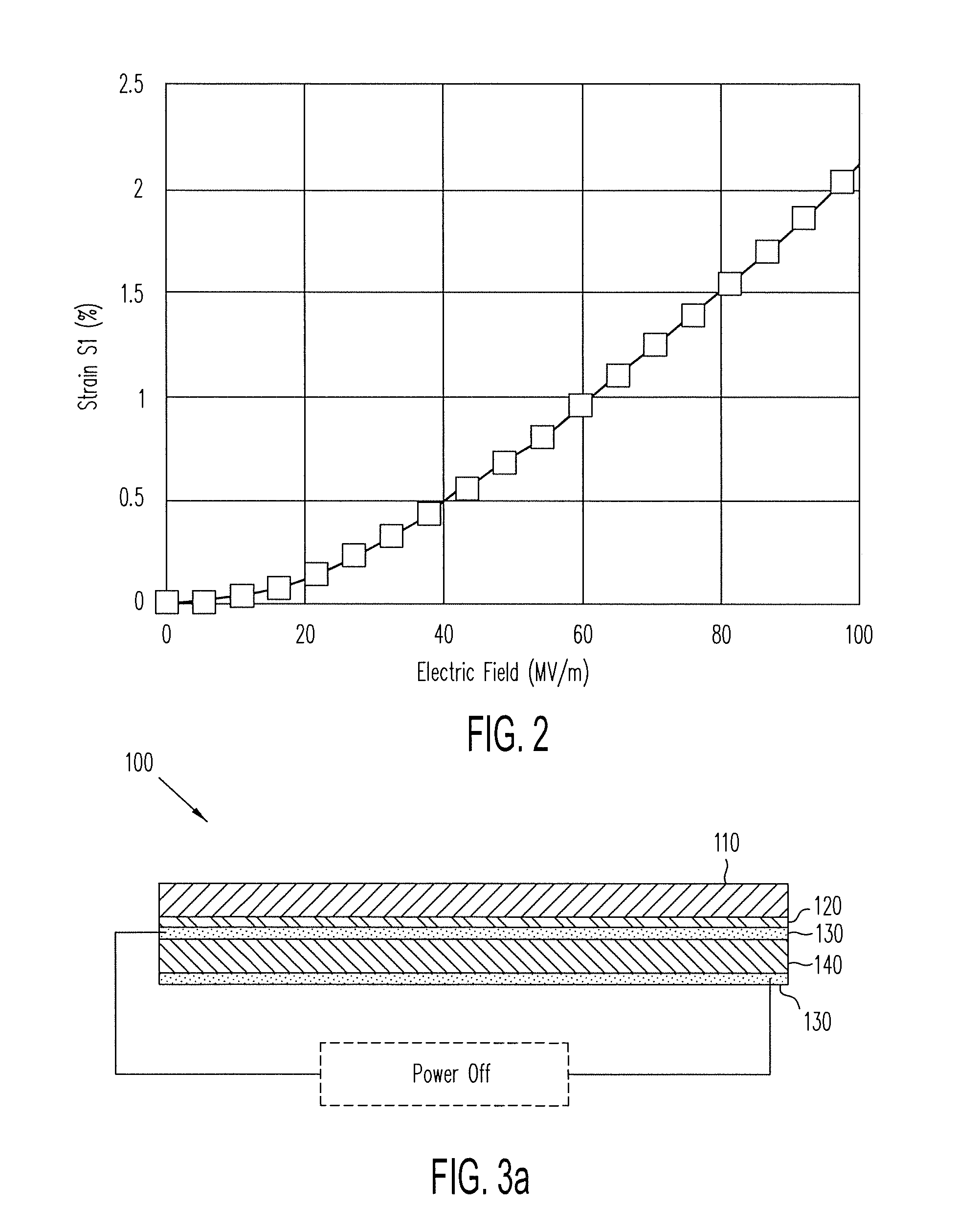System of audio speakers implemented using EMP actuators
a technology of actuators and audio speakers, applied in the field of transducers, can solve the problems of increasing entropy and temperature of emp transducers, and generating strong vibrations using ac voltages, and achieve the effect of maximizing displacemen
- Summary
- Abstract
- Description
- Claims
- Application Information
AI Technical Summary
Benefits of technology
Problems solved by technology
Method used
Image
Examples
Embodiment Construction
[0069]The electromechanical polymer (EMP) transducers of the present invention disclosed herein are electrostrictive, rather than piezoelectric. Some examples of the electromechanically active polymers incorporated in the EMP transducers of the present invention include P(VDF-TrFE) modified by either high energy density electron irradiation or by copolymerization with a third monomer. Such a modification lead to significant performance change; namely, the EMP loses its piezoelectric and ferroelectric behaviors and become an “electrostrictive” or “relaxor ferroelectric” material. The resulting EMP actuators respond to an imposed electric field by elongating in a direction perpendicular to the electric field, regardless of the field polarity. Typically, the EMP actuator of the present invention may generate a more than 1% strain under an electric field of 100 MV / m, which is significantly higher than the typical piezoelectric materials, such as lead zirconate titanate (PZT), a piezoele...
PUM
 Login to View More
Login to View More Abstract
Description
Claims
Application Information
 Login to View More
Login to View More - R&D
- Intellectual Property
- Life Sciences
- Materials
- Tech Scout
- Unparalleled Data Quality
- Higher Quality Content
- 60% Fewer Hallucinations
Browse by: Latest US Patents, China's latest patents, Technical Efficacy Thesaurus, Application Domain, Technology Topic, Popular Technical Reports.
© 2025 PatSnap. All rights reserved.Legal|Privacy policy|Modern Slavery Act Transparency Statement|Sitemap|About US| Contact US: help@patsnap.com



